Speakers
Professor Michael Kalloniatis
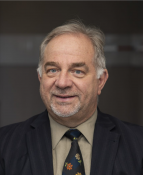
Michael completed his optometry degree at the University of Melbourne after completing his master’s degree at the same institute then undertook PhD studies at the University of Houston, Texas. After post‐doctoral training at the University of Texas, he returned to Melbourne where he was an academic staff member in the optometry department before moving to The University of Auckland where he was the Robert G Leitl Professor of Optometry and Vision Science and Head of School.
In 2009, he took up the position of Centre Director and Professor at the Centre for Eye Health, UNSW. His expertise is in retinal neurobiology, visual psychophysics (as it applies to clinical testing) with a keen interest in glaucoma and retinal disease diagnosis.
He is an active researcher publishing in a wide topic area and he also presents at both local and international meetings.
Lecture 1 (Kalloniatis): Colour vision assessment and modern clinical techniques applied to clinical practice (45 min)
Learning Objectives
- Be able to integrate colour vision and a range of other clinical results to help in the diagnosis and management of ocular disease
- Appreciate the different types of congenital colour vision defects and how some reflect a family of cone dystrophies that can be identified using multi‐model imaging
- Being able to put Köllner’s law into perspective: acquired colour vision deficiencies impact all visual processing channels
- Understand how the results of colour vision testing can complement the understanding and help in the diagnosis of ocular disease through clinical cases
Lecture 2 (Kalloniatis): Ocular ischaemia in clinical practice (45 min)
Learning Objectives
- Understand how retinal and cortical blood supply impact vision and other neurological changes induced by ischaemic insult, including transient monocular vision loss (TMVL)
- Appreciate that in addition to routine ocular imaging, OCT‐angiography (OCTA) provides useful insights to clinical diagnosis in ocular ischaemia
- Through a series of case presentations understand the impact of ischaemic insult on the eye and visual system
- Understand the suitable management of TMVL, relating to the urgency of referral and where to refer
Lecture 3 (Kalloniatis): Managing the many facets of glaucoma (45 min)
Glaucoma management is complex even before diagnosis is made. In this lecture the multiple facets of glaucoma will be discussed from review cycles/frontloading visual fields and include a series of cases studies and some interesting imaging results.
Learning Objectives
- Appreciate the cost/benefit of testing review cycles for glaucoma suspects and the way the most efficient protocol is derived
- Understand why ‘2’ is better than ‘1’ when using the frontloading visual fields
- Appreciate that in addition to routine ocular imaging, OCT‐angiography (OCTA) provides useful insights to clinical diagnosis in optic nerve disease
- Through a series of cases, understand the multiple facets of glaucoma presentation including strategies in long‐term management of your glaucoma patients
Professor Steven Dakin
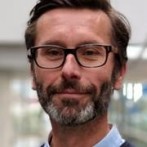
Steven’s research career started with a PhD (1994) on psychophysics at the University of Stirling. He moved to the UCL Institute of Ophthalmology in 1999, where his work centred on vision through the lifespan and in individuals with neuropsychiatric and neurodevelopmental disorders (such as autism), and was promoted to Professor of Visual Psychophysics in 2010. He joined the School of Optometry and Vision Science in 2014, serving as Head for 8 years. At SOVS he championed the importance of community eye health research, raising funds for the first Associate Professor in Public Eye Health, first Professional Teaching Fellow Kaiāwhina, as well as for Vision Bus Aotearoa, New Zealand’s first comprehensive mobile eye clinic.
His ongoing research into the treatment of amblyopia in children is the subject of an ongoing Phase 2 clinical trial in the UK. Current projects explore how technology can be used to improve assessment and treatment of visual function. In the last eight years he has shown how eye tracking can be used to provide objective measures of many aspects of vision including acuity, peripheral vision, fusion and colour vision and even to drive subjective refraction. He co‐developed the Auckland Optotypes, a set of chart‐symbols that are increasingly being adopted worldwide as a better way of testing acuity in children.
Abstract (Dakin): Could eye-tracking replace patient-report in an eye exam? (45 min).
Assessment of functional/useful vision is the cornerstone of optometric assessment. However it remains dependent on patients being able to make reliable forced‐choice judgements about visual stimuli. Various groups of patients (e.g. children, adults with cognitive impairment) struggle with such judgements. The cognitive/memory demands of tasks for assessing recognition acuity, for example, is known to contribute to the sometimes poor reliability of such an important test of visual function.
I will present work from my lab from the last seven years developing tests of vision that minimize cognitive/memory demands, by using an automated assessment of patients’ eye movements as a proxy for subjective judgements. Having given some background about the types of eye movements we use and how we measure them, I will summarise the results of four studies. These show how eye movements can support:
- Assessment of contrast‐sensitivity and acuity
- Diagnosis of colour vision deficits
- Subjective refraction
- Measurement of fusional reserves
In almost all cases the reliability of such measure matches or exceeds the clinical gold standard (based on patient report) and I conclude by considering how we might best put these tests into the hands of clinicians.
Dr. Lize Angelo

Lize is a current PhD student with a passion for ocular research and is currently investigating barriers and health inequities in keratoconus and crosslinking subjects.
Abstract (Angelo): Optometrist Referral Patterns of Patients with Keratoconus (ORK) Study in New Zealand (10 min)
This talk will cover the aims of a prospective study assessing the current practice and referral patterns of optometrists regarding patients with keratoconus via an optometrist survey. We will discuss the results of a similar Australian study (1) and how we will apply this to New Zealand. The ultimate purpose of this study is to evaluate the complexities of managing patients with keratoconus and provide a better understanding of the diagnostic and referral patterns of optometrists. This valuable information can be used to optimise patient referral and secondary care pathways and allow for better training and education of optometry students and improve co‐management opportunities. This survey will represent the first investigation of the management of keratoconus at the primary eye‐care level in Aotearoa.
Reference: (1) Hodge C, Chan C, Zantos S, Kokkinakis J, Stapleton F, Sutton G. Therapeutic treatment of keratoconus: a survey of local optometric practice criteria. Clin Exp Optom. 2015; 98: 312‐8.
Dr Joanna Black

Jo is an optometrist and researcher specialising in vision conditions that occur during development such as amblyopia or ‘lazy eye’, refractive error and binocular vision disorders. Her research is clinically based and tries to identify ways to make vision treatments more accessible for children and families.
Jo worked in Auckland private practice 2005‐2014 and completed her PhD (Optometry) in 2010. She is currently a Senior Lecturer and Deputy Head of School at the School of Optometry and Vision Science, The University of Auckland. She teaches undergraduate optometry students and supervises postgraduate research students.
Abstract (Black, Simkin, Findlay) Option 1: Paediatric optometry interest group: Q+A panel and peer discussion (90 min)
We are looking to discuss in our session about paediatric eye care in Aotearoa NZ: access to care, role of community optometrists, how a paediatric optometry interest group might work as an opportunity for networking and development in this area, interesting cases, and the overlap and relationship between optometrists and the hospital for paediatric eyecare.
Dr Alice Cade
 I began practising as a chiropractor in 2002 and have a strong passion for understanding the brain‐body connection and how that carries the vital information that allows us to be healthy and functional. I specialise in working with children with neurodevelopmental delay and adults with mild traumatic brain injuries (concussions). I have dedicated myself to understanding more about how chiropractic affects the brain, and how it can help people recover from brain injuries.
I began practising as a chiropractor in 2002 and have a strong passion for understanding the brain‐body connection and how that carries the vital information that allows us to be healthy and functional. I specialise in working with children with neurodevelopmental delay and adults with mild traumatic brain injuries (concussions). I have dedicated myself to understanding more about how chiropractic affects the brain, and how it can help people recover from brain injuries.
In addition to practice, I lecture in Neuroscience and teach clinical skills at the New Zealand College of Chiropractic. I’m also heavily involved in research into the many positive benefits of chiropractic care for health and well‐being. I am currently completing a PhD at School of Optometry, The University of Auckland, investigating the effects of mild traumatic brain injuries (concussion) eye movements and how chiropractic care might help those affected. I also completed her Masters of Health Science in 2018, studying the effect of chiropractic and eye‐tracking in kids with ADHD.
Abstract (Cade): Oculomotor function in young adults with (mTBI) mild traumatic brain injury (15 min)
This study aims to establish a reliable battery of eye tracking tests to identify alteration in oculomotor function of those with mild TBI. It also aims to investigate whether neck muscle vibrations influence eye tracking in individuals with post‐ concussive symptoms, and which oculomotor tests are most useful in differentiating between those with post‐concussive symptoms and healthy individuals based on eye movements alone.
Dr. Malcolm Carey
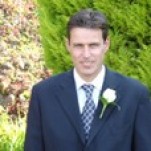
FCOphth(SA), MMed(Ophth)
Dr Carey completed his medical degree and then specialized in ophthalmology in Cape Town, South Africa. After doing a Fellowship in the UK, he has been in private practice for the last 12 years. He has served in numerous leadership roles, including the Executive Committee of the SA Society of Cataract and Refractive Surgeons.
As a comprehensive ophthalmologist, he has a special interest in Corneal Surgery and Anterior Segment Pathology including Complex Cataracts, Refractive solutions and Glaucoma. He joined the Rotorua Eye Clinic in January 2021.
Dr. Rebecca Findlay

Rebecca is a paediatric optometrist working at Te Whatu Ora Counties Manukau and BLENNZ, and a research fellow with the School of Optometry and Vision Science at the University of Auckland. She recently completed her PhD which assessed current vision screening in NZ and the effect of uncorrected vision problems on reading and learning.
Abstract (Black, Simkin, Findlay): Red flags in paediatric cases (45 min)
A selection of paediatric cases not to be missed that quicken the pulse and sharpen the brain.
Abstract (Black, Simkin, Findlay) Option 1: Paediatric optometry interest group: Q+A panel and peer discussion (90 min)
We are looking to discuss in our session about paediatric eye care in Aotearoa NZ: access to care, role of community optometrists, how a paediatric optometry interest group might work as an opportunity for networking and development in this area, interesting cases, and the overlap and relationship between optometrists and the hospital for paediatric eyecare.
Lahiru Gunasena
Lahiru is an ODX product specialist at Carl Zeiss New Zealand. He provides workflow and diagnostic solutions for optometry and ophthalmology services. JCAHPO certified, his
previous experience offers practical insights in the eyecare sector, and he is interested in future‐proofing collaborative pathways
Abstract (Gunasena): A collaborative approach to managing glaucoma in regional Australia (30 min)
This presentation will review an article recently published in Insight Magazine in which two eyecare professionals (ophthalmologist and optometrist) detailed how they have implemented a collaborative approach to managing Glaucoma in regional Australia.
The session will cover the following topics:
- Identifying barriers to glaucoma co‐management
- Outlining how it is possible to create a synergy of equipment and ethos
- Clinically identify which cases of glaucoma could be co‐managed between optometry and ophthalmology
- Reviewing real life case studies that demonstrated this co‐management approach in action
Dr Kate Gifford
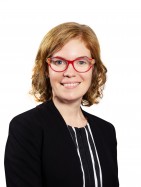
PhD, BAppSc(Optom)Hons, GradCertOcTher, FBCLA, FIACLE, FCCLSA, FAAO, GAICD
Kate is an internationally renowned clinician‐scientist optometrist and peer educator, and a Visiting Research Fellow at Queensland University of Technology, Australia. She holds a PhD in contact lens optics in myopia, four professional fellowships, over 90 peer reviewed and professional publications, and has presented more than 170 conference lectures. Kate was the youngest ever National President of Optometry Australia from 2014‐16 and was named the QUT Young Alumnus of the Year in 2017. Kate is the Chair of the Clinical Management Guidelines Committee of the International Myopia Institute and lead author on the landmark 2019 paper and 2021 Digest by that committee. She was named one of the world’s top Myopia Influencers by Contact Lens Spectrum in 2021. In 2016 Kate and her optometrist husband Dr Paul Gifford co‐founded Myopia Profile, the world‐leading educational platform on childhood myopia management. After running her paediatric, contact lens and myopia practice in the Brisbane CBD for 13 years, Kate moved full time into peer education through Myopia Profile in 2020.
Abstract (Gifford): The next generation: myopia controlling spectacle lenses (30 min)
Learning objectives:
- Describe scientific research outcomes of new myopia controlling spectacle lenses in terms of efficacy and visual function
- Determine clinical pathways for prescribing new myopia controlling spectacles Outline: The next generation of myopia control is new spectacle lens designs with lenslets, which appear to have efficacy to slow myopia progression in children which is at least as good as the current 'best' interventions of orthokeratology, dual‐focus soft contact lenses and 0.05% atropine. This lecture will describe the optical design of these spectacle lenses, with a focus on the new Essilor Stellest lens and the number of new research papers which describe its outcomes for efficacy and visual function. The lecture will then conclude with clinical pathways for prescribing these new technology spectacle
Abstract (Treanor, Gifford) Option 4: Myopia control interest group: Q+A panel and peer discussion (90 min)
In this session we are looking to discuss how a myopia interest group might be an opportunity for networking and development, exchange ideas on how to improve access to clinical care, and share cases for peer discussion.
Adele Jefferies

MSc(Hons) BOptom(Hons) CertOcPharm(Therapeutics)
Adele is an optometrist working in independent practice in Auckland with special interests in Dry Eye & Ocular Surface Disease, Contact Lenses and Therapeutics. She is the National Clinical Manager for the Matthews Eyewear Eyecare Ltd Group of independent practices throughout New Zealand. She holds positions on the CPD Accreditation Committee and Competence Review Committee for the New Zealand Optometrists and Dispensing Opticians Board, is a councillor for Cornea & Contact Lens Society (NZ) and a Teaching Fellow at the University of Auckland School of Optometry & Vision Science. She graduated from the University of Auckland in 2003, completed her Postgraduate Therapeutics Studies in 2005 and her Master of Science in 2020. She has been a conference speaker for optometrists & dispensing opticians in Australia and New Zealand, a writer for MiVision, and a pre‐market evaluator of contact lens, contact lens care solutions and dry eye care products for various companies.
Abstract (Jefferies): Contact lens technology for astigmatic patients (30 min)
Learn about Alcon’s newest innovation in contact lens technology for our astigmatic patients. This presentation will discuss the science behind Alcon’s PRECISION BALANCE 8|4 stabilisation design and how this benefits astigmatic contact lens patients. Case studies and differences between Alcon’s water surface technologies will also be discussed to help determine which lens is suitable to which patient and how comfort issues may be addressed.
Richard Johnson
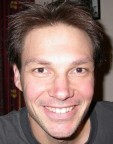 Richard Johnson graduated from the School of Optometry at the University of Auckland in 1993. He worked in the UK, Australia and Austria for a number of years as both an optometrist and contact lens fitter and since 2003 has been the principal optometrist at the Ophthalmology Department at Greenlane Hospital, where he works in the Acute Eye Service as well as paediatric, glaucoma and medical retinal clinics. He is a previous lecturer and examiner in Ocular Therapeutics at the University of Auckland Optometry School. Richard is a past president of the Cornea and Contact Lens Society of NZ and was also a trustee of the Eye Bank of NZ. He was been the chairman of VOSO, the NZ based charitable trust of optometrists and ophthalmologists providing eye care throughout the Pacific from 2006 to 2016 and is still a trustee and active volunteer with them. He has been involved in a number of multi‐national Phase three drug trials (as part of a research team, rather than a subject). He is an active wet crew volunteer in the Howick Unit of the NZ Coastguard.
Richard Johnson graduated from the School of Optometry at the University of Auckland in 1993. He worked in the UK, Australia and Austria for a number of years as both an optometrist and contact lens fitter and since 2003 has been the principal optometrist at the Ophthalmology Department at Greenlane Hospital, where he works in the Acute Eye Service as well as paediatric, glaucoma and medical retinal clinics. He is a previous lecturer and examiner in Ocular Therapeutics at the University of Auckland Optometry School. Richard is a past president of the Cornea and Contact Lens Society of NZ and was also a trustee of the Eye Bank of NZ. He was been the chairman of VOSO, the NZ based charitable trust of optometrists and ophthalmologists providing eye care throughout the Pacific from 2006 to 2016 and is still a trustee and active volunteer with them. He has been involved in a number of multi‐national Phase three drug trials (as part of a research team, rather than a subject). He is an active wet crew volunteer in the Howick Unit of the NZ Coastguard.
Abstract (Vellara, Ziaei, Johnson, Zhuang, Shon) Option 5: Ocular surface and dry eye disease interest group (90 min)
We are looking to discuss ocular surface allergies, neoplasias, and dry eye. There will all be an update on vital dyes and various cases reports on the ocular surface, and dry eye with a collaborative approach to care.
Simran Kaur
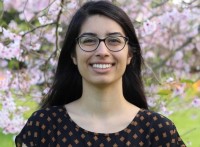
Simran graduated as an optometrist from The University of Auckland in 2019, then started a whole new second career as a financial educator. She has co‐founded the number‐one finance podcast “Girls That Invest”, which to date has had over 2 million downloads globally, been a TEDx speaker, newspaper investment commentator, and is the best‐ selling author of personal finance book "Girls That Invest".
Abstract (Kaur): Financial literacy for health practitioners: Personal finance and investing 101 (lecture 30 min and workshop 90 min)
Financial literacy is important for health practitioners. A basic understanding of personal saving, investing, and budgeting in your personal life is one gateway to a better understanding of finance in your professional life, which includes health economics and the planning and funding of public or private clinical health services.
Joevy Lim

Joevy is a NZ registered doctor who intends to specialise in Ophthalmology. She is currently conducting her PhD studies on the topic of Ocular Melanoma in New Zealand and was awarded an HRC Clinical Research Training Fellowship for her research.
Abstract (Lim): NZ Pigmented Eye Lesion Study: What is it and how do you get involved? (10 min)
This talk will feature an educational and illustrative series of benign and malignant eye lesions that were seen in ophthalmology clinics, followed by an update on the current NZ Pigmented Eye Lesion study that is open to nationwide optometrists. A step‐by‐step guide on how to make a referral into this study will be demonstrated and a link to the study provided.
Richard Lobb
Richard grew up in Invercargill. A teenage interest in physics and biology coinciding with the need for spectacles around that time stimulated an interest in optometry as a career. He completed his training at the University of Auckland in 1982 and returned in 2003 for further studies in Ocular Therapeutics. He has served on the New Zealand Optometrists Registration Board from 2007 until 2013, working as the chairman for two years, and is an honorary teaching fellow affiliated with the School of Optometry & Vision Science at the University of Auckland.
Richard has a special interest in glaucoma management. He is currently working part time in the Southland Hospital glaucoma clinic, and the rest of his time in his community optometry practice in Invercargill.
Abstract (Park, Lobb, So) Option 2: Hospital optometry interest group: Q+A panel and peer discussion (90 min)
In this session we are looking to discuss how a hospital optometry interest group might be an opportunity for networking and development, exchange ideas on how to improve access to public health care, and share cases that are very different to those seen in primary care community optometry (more complex, advanced disease, post‐surgical).
Inhae Park
Inhae graduated from University of Auckland in 2010 with a Bachelor of Optometry (Hons). After 10 years of community optometry, mostly in Upper Hutt, she is currently a glaucoma optometrist who splits her week working between the Wellington Hospital and Kenepuru Hospital glaucoma clinics, and a private ophthalmology glaucoma clinic. When she is not checking pressures or assessing optic nerves she enjoys renovating her 120‐year‐old villa and engaging in all forms of physical exercise.
Abstract (Park, Lobb, So) Option 2: Hospital optometry interest group: Q+A panel and peer discussion (90 min)
In this session we are looking to discuss how a hospital optometry interest group might be an opportunity for networking and development, exchange ideas on how to improve access to public health care, and share cases that are very different to those seen in primary care community optometry (more complex, advanced disease, post‐surgical).
Bhavna Patel

Bhavna is an optometrist and professional teaching fellow at the University of Auckland’s School of Optometry and Vision Science (SOVS). She has a special interest in dry eye and is currently completing a clinical master’s degree under the supervision of Professor Jennifer Craig and Dr Phil Turnbull.
Abstract (Patel): An Eye for an Eye (10 min)
In 2021, the Ocular Surface Lab commenced the Eye for an Eye Study, with a view to better understanding the natural history of dry eye disease by observing, in this case, the changes that occur at the ocular surface of optometry students over the course of their degree. Approved by the University of Auckland Human Participants Ethics Committee, the outcomes of this study are hoped to help bridge the current gap in evidence identified in the TFOS DEWS II Epidemiology report. Each year, this study is offered as a part IV honours project where student researchers capture data for an individual year by conducting comprehensive ocular surface assessments on their peers, with the goal for participants to return for annual assessment. Results from the first year have demonstrated that 44% of the study population exhibit dry eye disease based on the TFOS DEWS II diagnostic criteria. Individual year data allow risk factors to be explored. So far, no significant differences between genders or ethnicities for dry eye disease have been found within the study population. However, it was found that participants who were contact lens wearers were significantly more likely to suffer from dry eye disease than those who did not wear contact lenses. This initial dataset has provided us with some insight into the ocular surface of optometry students. In 2022, these measurements are being repeated on participants that are already enrolled and new part II students are being recruited for follow up throughout coming years. As the dataset grows, these annual measurements will enable us to improve our understanding of the changes that occur to the ocular surface over time.
Dr. John Phillips

John is a Senior Lecturer at School of Optometry and Vision Science, The University of Auckland. He invented the MiSight contact lens, the first‐ever USA Food and Drug Administration (FDA) approved treatment (2019) to slow the progression of myopia in children. He is Principal Investigator of the Auckland Myopia Laboratory. Research in this group includes clinical research into childhood myopia development, progression, and control and also research into the physiological processes which control eye size and which normally ensure that as the eye grows it remains emmetropic (i.e. without a refractive error).
Abstract (Phillips): Myopia research and clinical update (45 min)
Too much science at a myopia conference in Rotterdam can make you go blind. Is that statement true or is that statement fake news? Critical thinking skills will help you to decide. This presentation provides an update on what has been happening in myopia research and how that might apply to your clinical practice in NZ.
 Associate Professor Jacqueline Ramke
Associate Professor Jacqueline Ramke
Jacqui is an eye health services researcher with a background in optometry, international development, epidemiology and evidence synthesis. In 2020, Jacqui returned to New Zealand following a two‐year Commonwealth Rutherford Fellowship at the London School of Hygiene and Tropical Medicine, where she continues to hold an appointment as Associate Professor of Global Eye Health. Jacqui’s appointment at the University of Auckland is funded by the Buchanan Charitable Foundation, New Zealand. At the University of Auckland, Jacqui is establishing a research programme focused on developing and testing strategies to improve access to eye care and reduce inequality.
Abstract (Ramke): Aotearoa New Zealand population-based eye health survey (15 min)
In 2023, New Zealand will begin its first population‐based eye health survey. The survey is part of a multi‐disciplinary project that aims to promote healthy ageing in New Zealand, with a focus on improving access to health services for people living with eye, hearing, or foot problems, particularly if they also have diabetes.
The survey will estimate how many adults in Aotearoa live with vision impairment as well as its main causes, along with estimates for people living with hearing loss, foot problems, and diabetes. The survey will also estimate the extent to which people are accessing the health services that they need for these conditions.
This work is a collaboration between the Community Eye Health team and researchers with clinical expertise in audiology, podiatry, primary care, and diabetic medicine, as well as methodological expertise in Kaupapa Māori research, epidemiology and biostatistics. The research team will work closely with communities, service providers, professional associations and training institutions.
The project is funded by a HRC Project Grant, with co‐funding from Blind Low Vision NZ, the NZ Association of Optometrists, and the Buchanan Charitable Foundation.
Catherine Shon
Catherine is a member of the Ocular Surface Laboratory, working under the supervision of Professor Jennifer Craig, recently completing her Master’s thesis at the University of Auckland. She is a current practising optometrist, with a special interest in dry eye and myopia control. Additionally, Catherine works along Marcy Tong at the Dry Eye clinic within the University of Auckland, helping to teach final year optometry students diagnose and manage dry eye disease.
Abstract (Vellara, Ziaei, Johnson, Zhuang, Shon) Option 5: Ocular surface and dry eye disease interest group (90 min)
We are looking to discuss ocular surface allergies, neoplasias, and dry eye. There will all be an update on vital dyes and various cases reports on the ocular surface, and dry eye with a collaborative approach to care.
Dr. Samantha Simkin
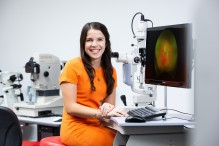
Samantha is a therapeutically qualified optometrist who graduated with first class honours and completed her PhD in childhood visual impairment in New Zealand. She continues her research as the Research Fellow for the Blind and Low Vision Education Network New Zealand, and as Education and Research Fellow for the New Zealand Association of Optometrists. She has multiple peer‐reviewed publications and regularly speaks at both national and international conferences on her areas of expertise, which include paediatric optometry, myopia management, causes of visual impairment in children and management of children with low vision. Samantha works clinically for Taranaki District Health Board and Judd Opticians.
Abstract (Black, Simkin, Findlay) Option 1: Paediatric optometry interest group: Q+A panel and peer discussion (90 min)
We are looking to discuss in our session about paediatric eye care in Aotearoa NZ: access to care, role of community optometrists, how a paediatric optometry interest group might work as an opportunity for networking and development in this area, interesting cases, and the overlap and relationship between optometrists and the hospital for paediatric eyecare.
Debra So
After graduating with honours from the University of Auckland optometry school in 2008, Debra worked in private practice and volunteered for aid trips to Samoa and Fiji. She joined Counties Manukau DHB in 2010, primarily involved in diabetic retinal clinics. In the same year she established the tertiary contact lens service at Counties to bring the service closer to home for patients. She has recently been appointed as the Allied Health Clinical team leader in Ophthalmology at Counties DHB as a job share while also working part‐time at Greenlane Clinic Center. She is involved in glaucoma, anterior segment, medical retina, post‐operative and acute eye clinics. In her spare time, Debra enjoys spending time with her family; she is also a keen sports climber and runner.
Abstract (Park, Lobb, So) Option 2: Hospital optometry interest group: Q+A panel and peer discussion (90 min)
In this session we are looking to discuss how a hospital optometry interest group might be an opportunity for networking and development, exchange ideas on how to improve access to public health care, and share cases that are very different to those seen in primary care community optometry (more complex, advanced disease, post‐surgical).
Hadyn Treanor
Hadyn graduated from the University of Auckland Optometry School in 1998. He has since worked in practices in Wellington, Auckland, Adelaide and throughout southern England and Wales. He completed post graduate studies at City University, London and has also completed his post‐graduate certificate in ocular therapeutics. He became a practice owner of Frith & Laird Optometrists in 2010, a long‐established community practice in Manurewa, Auckland. He works part time at Middlemore Hospital in the glaucoma clinic, and also finds time to be the current Vice President of NZ Association of Optometrists.
Specialty clinical interests: dry eye, glaucoma, myopia control, children's vision and advanced contact lenses (including keratoconus)
Dr. Phil Turnbull
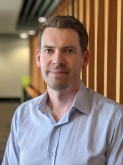
Phil is the Professional Standards Advisor to the Optometrists and Dispensing Opticians Board (ODOB), and a Senior Lecturer in the School of Optometry and Vision Science at the University of Auckland. He has also acted as an Expert Witness in several criminal cases and is the optometric advisor to the Civil Aviation Authority. His research interests include adapting technology to assess visual function, including virtual reality, infrared eye tracking, arterial spin labelling magnetic resonance imaging (ASL‐MRI), and multifocal electroretinograms (mf‐ERG) to create more objective measures of visual function and ocular physiology.
Abstract (Turnbull): Mental wellbeing of optometry students at UoA (30 min)
Studying a clinical course at university is particularly challenging. The students are at a transitional stage of life ‐ entering independent adulthood ‐ and they face long hours of study, must obtain large amounts of knowledge, over many years. This leaves little time for activities that can help balance stress. On top of this, interaction with the public who are depending on them for care places additional pressure to put on a happy face. To gain some insight into how some of our clinical students are doing, since 2019 we have been conducting annual mental wellness surveys. This talk will discuss the pressures and stresses facing our future clinicians, and what efforts are being made to minimise mental distress.
Rochelle van Eysden

Rochelle spent four years achieving two degrees in psychology before completing her BOptom(Hons) in 1998. She loves her 3 young children but to get away from them she is an honorary teaching fellow at the School of Optometry and Vision Science, is the Immediate Past President of NZAO and also runs her own practice in Christchurch.
Abstract (Van Eysden): Survivor Taupo 2022 Post-COVID Boosted Quiz Edition (75 min)
This presentation is in the form of a team‐style quiz with a range of challenging questions, both eye related and general knowledge.
Dr Hans Vellara
Hans is a therapeutically qualified optometrist, with a special interest in advanced contact lens fitting, including orthokeratology (Ortho‐K) for myopia control and keratoconus, as well as dry eye management. Hans holds a Bachelor of Optometry (Hons) from The University of Auckland. Hans then decided to foster this passion for the latest ophthalmic technology further by undertaking a PhD which he completed in 2019. Hans prides himself on being a jack of all trades when it comes to eye health care. He has developed a wide array of skills from a varied and globetrotting career.
Abstract (Vellara, Ziaei, Johnson, Zhuang, Shon) Option 5: Ocular surface and dry eye disease interest group (90 min)
We are looking to discuss ocular surface allergies, neoplasias, and dry eye. There will all be an update on vital dyes and various cases reports on the ocular surface, and dry eye with a collaborative approach to care.
Dian Zhuang
Dian is a NZ trained therapeutic optometrist and currently a PhD candidate and a member of the Ocular Surface Laboratory in the Department of Ophthalmology, The University of Auckland. Dian's current research investigates the inflammasomes as potential modifiable markers of dry eye disease which is one of the most common patient complaints during eye examinations.
Abstract (Vellara, Ziaei, Johnson, Zhuang, Shon) Option 5: Ocular surface and dry eye disease interest group (90 min)
We are looking to discuss ocular surface allergies, neoplasias, and dry eye. There will all be an update on vital dyes and various cases reports on the ocular surface, and dry eye with a collaborative approach to care.
Dr Mo Ziaei
Mo is a consultant ophthalmologist specialising in cataract surgery, laser vision correction and corneal transplantation at Greenlane Clinical Centre and Re:Vision in Auckland. He is also a senior lecturer in ophthalmology at the University of Auckland, having completed his doctoral thesis on novel options for the treatment of corneal disease.
Abstract (Vellara, Ziaei, Johnson, Zhuang, Shon) Option 5: Ocular surface and dry eye disease interest group (90 min)
We are looking to discuss ocular surface allergies, neoplasias, and dry eye. There will all be an update on vital dyes and various cases reports on the ocular surface, and dry eye with a collaborative approach to care.